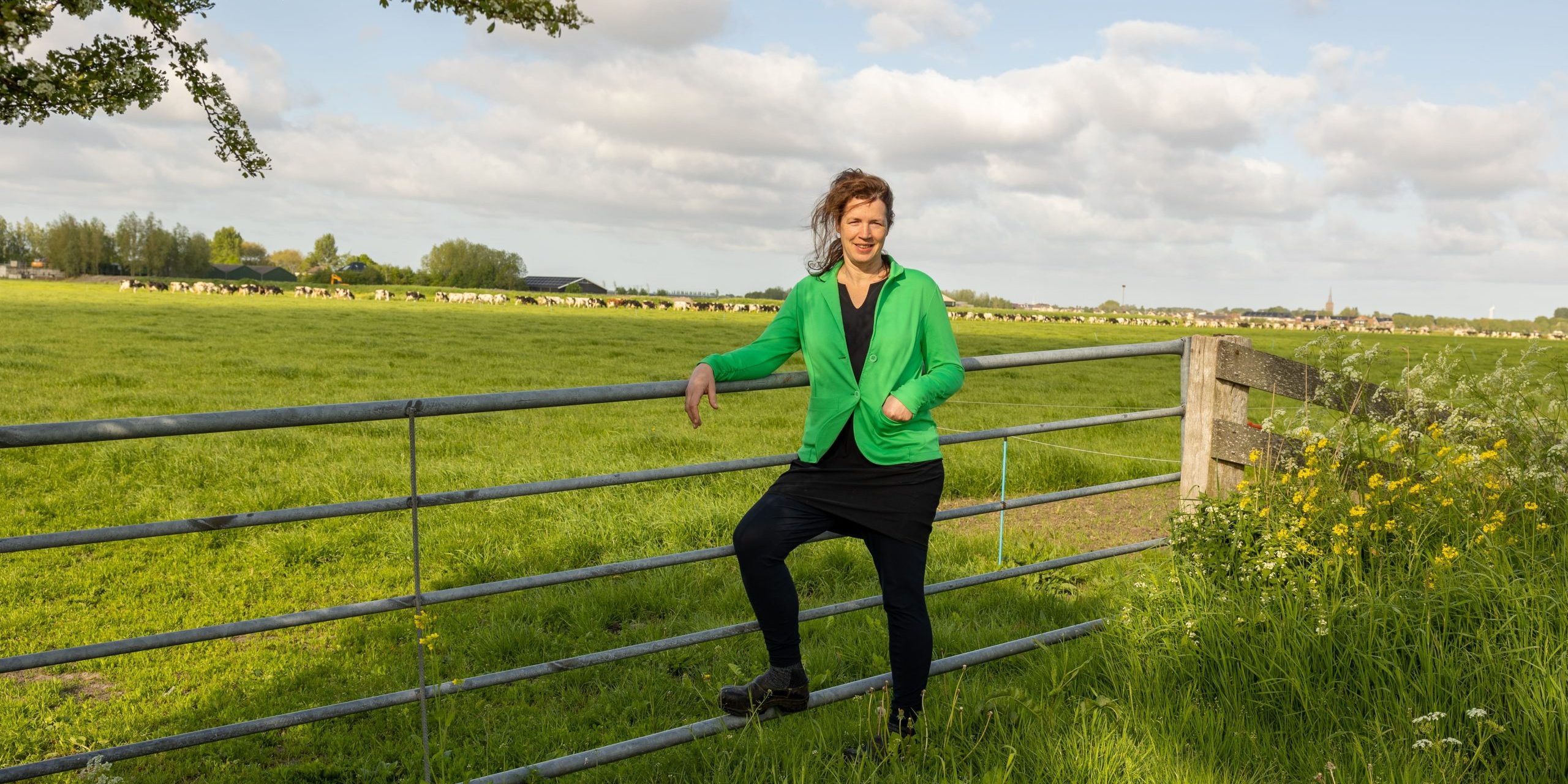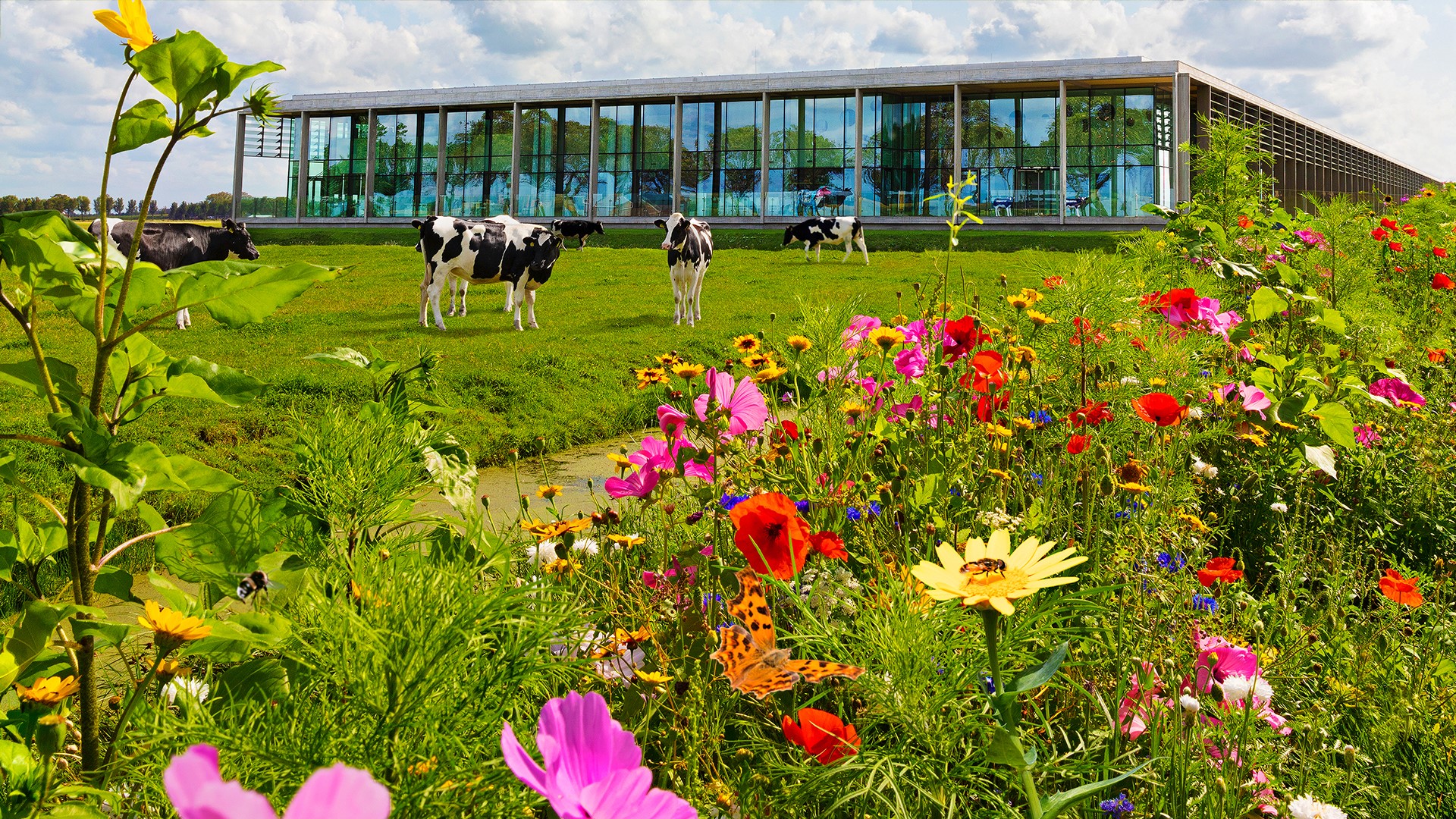In some things, cows are very similar to humans. For example, like us, it is healthier for a cow to eat unprocessed food. In other words, lots of fresh vegetables. That is why CONO dairy farmers Christina and Marius Kranenburg from Spierdijk are participating in the 'Concentrated feed and by-products' pilot project and their cows only need half the amount of concentrated feed. That's better for the environment, and the cows are doing extremely well on all that extra natural power.
Collaboration
The 'Concentrated feed and by-products' pilot is part of CONO's climate ambition. Two years ago CONO decided to investigate whether feeding co-products and/or regional residue streams could contribute to these ambitions. Together with sustainable feed specialist Duynie Feed, compound feed supplier Koenis, PPP-Agro advies, Ben & Jerry's and nine dairy farmers (including Christina), the practical trial started in 2022. The first results are positive: Feed costs are lower, while a positive effect on the climate was measured. For example, the CO2-eq reduction, as a result of a ration adjustment, ran as high as 10%.
Healthy cow
Turnip meal, potato press fiber, corn, beet pulp, brewer's grains and nice coarse grass. That has been on the menu of Christina and Marius Kranenburg's 175 dairy cows and 100 head of young stock for six months. "We go for a healthy cow. On vegetables with a lot of fiber, cows have to chew longer. That makes it easier to digest the food properly," Christina said. "In addition, the food moves more slowly through the stomachs and intestines, so there is more time to absorb the good substances and water. You see that reflected in the milk, and nice compact manure remains. We always say: anything a cow poops too thin goes off the milk."

More sustainable world
With the new menu, Christina and Marius (with five cooperating sons) are also contributing to a more sustainable world. For example, from production to transport, concentrated feed is one of the largest burdens on the environment; it makes a considerable difference that the cows now only eat five kilograms instead of the previous nine kilograms of concentrated feed per cow per day. In addition, the new feed consists of residual products from other production processes. Beet pulp, for example, is left over from sugar production. And brewer's grains are released from brewing beer. In this way, less usable food ends up in landfills. You almost wonder: why doesn't every farmer switch over? "Well, it is more intensive," Christina explains. "And it has to fit your farm. There are six components in the ration now, and previously only grass and concentrates. Not everything is available all year round - after all, beets don't come out of the ground until autumn - so we have to plan procurement better, among other things. But also the cutting time in the spring of our own grass. For a good quality and quantity of milk, lots of protein, carbohydrates and sugars are important. Whether you cut grass on April 25 or May 10 can be a huge difference for how much sun it has had or whether the grass is already nice and stiff. So every day we check what the ideal time is."
Coat shines more
Lots of fresh grass for creamy, tasty cheese, less concentrate and more by-products are therefore better for the cow and better for the environment. But also better for the farmer? Christina is very clear on this: "If the cow is doing well, then we are doing well. I see that the calmness in the herd has improved, the coat shines more, the condition is better, and the production of milk has increased by about ten percent per day. Only in a while will we see if that is also a gain in the wallet. In any case, the environment has already won, because we are emitting 8.2 percent less greenhouse gases. Besides, I like to experiment, and it worked out nicely that we could join this pilot."

